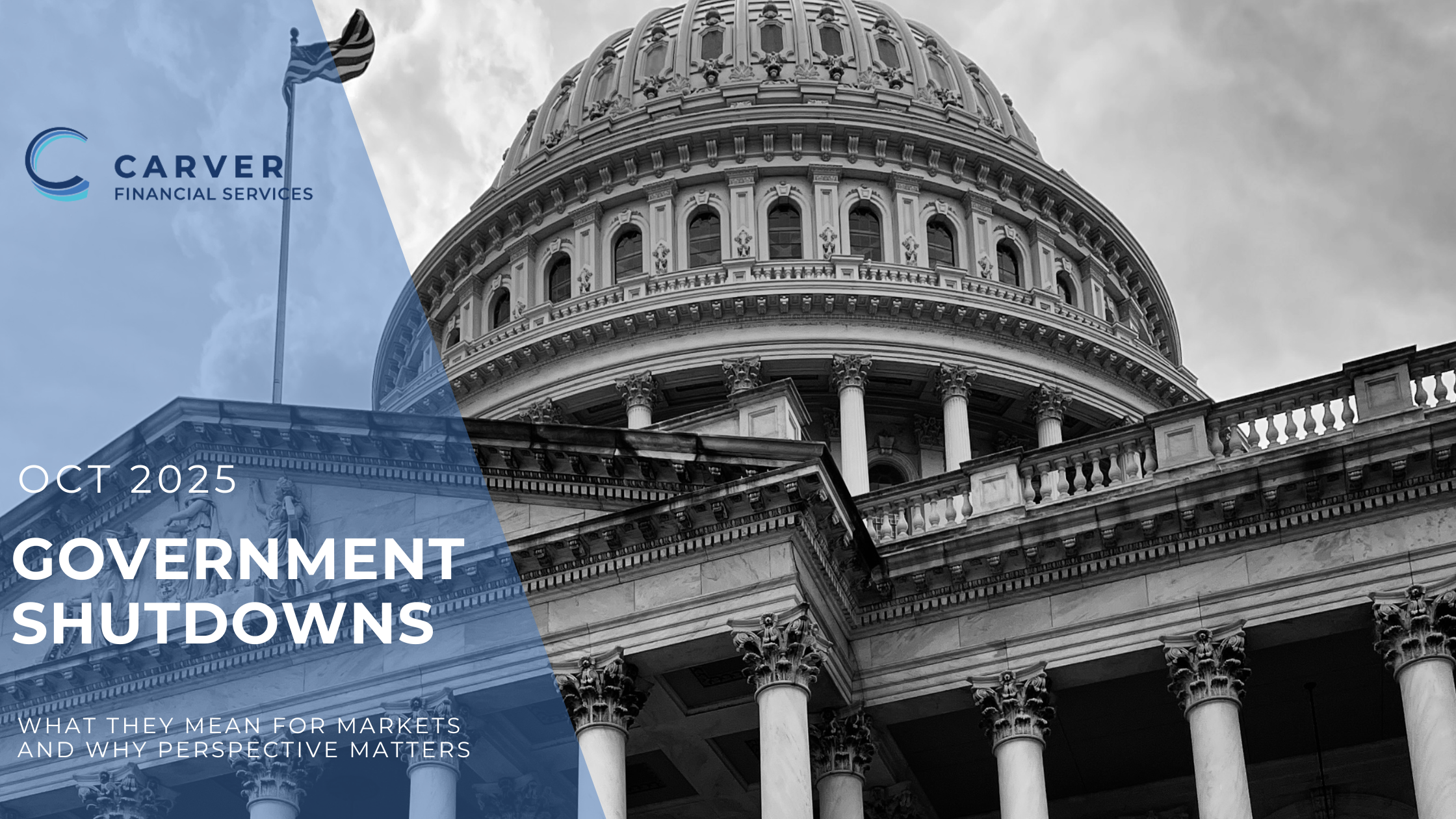
As the current U.S. government shutdown approaches the three-week mark, it’s natural for headlines (and investor nerves) to amplify. At Carver Financial Services, we believe that staying grounded in facts and maintaining a long-term perspective is the best way forward. Below, we provide historical context, evaluate what this shutdown may — and may not — mean for financial markets over the next 6-12 months, and highlight how we’ve supported clients through past events.
1. How common are government shutdowns — and what’s their track record?
Contrary to what some headlines suggest, government shutdowns are not once-in-a-generation events. They have become a recurring feature of the federal budget process:
- Since 1980, there have been about 10 funding-lapse shutdowns that resulted in furloughs of federal employees.
- Depending on how you count (continuing resolutions, partial closures, ), some sources identify as many as 14 since 1980.
- The durations vary: many last only a few days, though a few stretch into
- The longest shutdown in S. history ran 35 days (December 2018 to January 2019). So, while the political context always differs, the mechanics (and market reaction patterns) have been fairly consistent.
2. What is and isn’t impacted during a shutdown
It’s important to draw the distinction between what typically slows or stops — and what continues uninterrupted:
Often curtailed or halted:
- Many non-essential federal programs and discretionary services: national parks, museums, regulatory or permitting functions.
- Agencies with discretionary funding (for example portions of Health & Human Services, Education, Interior) may furlough staff or reduce operations.
- Economic data releases (jobs reports, census surveys) can be delayed or suspended, creating “blind spots” for policy- and market-makers.
Typically unaffected:
- Mandatory programs funded outside the annual appropriations process: Social Security, Medicare, Medicaid, veterans’ benefits all continue.
- Essential life-safety or national security functions: defense operations, air-traffic control, border security remain in operation — though pay may be delayed.
- The S. Postal Service, funded differently, continues.
- Importantly, debt servicing (interest and principal payments on S. debt) continues, so a shutdown is not a sovereign default.
In short: a shutdown is disruptive, but it is not a total paralysis of government or economy.
3. Market and economic impacts in the 6-12 months following shutdowns
Here’s what the historical evidence tells us:
(a) Market returns tend to recover
- According to published data, since the mid-1970s the S&P 500 has delivered positive 12- month returns after the vast majority of shutdowns.
- For example: after the 35-day 2018-19 shutdown, the S&P rose ~24% in the following
- Other summaries show that 12 months post-shutdown, stocks were higher in 15 out of 16 cases, with an average gain of ~16%.
- Even 6 months post-shutdown, average gains of ~9.7 % have been observed. This suggests that while headlines may spook markets short-term, equity markets typically resume their longer-term trend once the shutdown ends.
(b) Economic drag tends to be modest
- For the 2018-19 shutdown, the Congressional Budget Office (CBO) estimated a reduction in GDP of ~0.1% in Q4 2018 and ~0.2% in Q1 2019.
- Economically, the main cost is often the time lost in operations and data gaps; structurally the economy remains intact.
- The bigger risk is not the shutdown per se, but if it triggers a broader loss of confidence, delays key policy, or messes up the flow of credit and data.
4. Putting it in perspective — what we expect, and what we’re watching
At Carver Financial Services, our view is as follows:
- Short-term volatility and sentiment shocks are possible (and likely) when prominent fiscal events like a shutdown hit the news.
- But long-term economic and corporate fundamentals — earnings growth, balance sheets, interest rates, productivity — remain the drivers of returns.
- Historically, once a shutdown is resolved cleanly, markets The greater danger would be prolonged political gridlock, a failure to raise the debt ceiling, or systemic credit disruptions.
- We continue to monitor broader fiscal and monetary conditions: debt-ceiling negotiations, interest-rate policy, global growth trends, credit flows.
- Our portfolios remain grounded in fundamentals: strong companies, healthy balance sheets, diversified assets, and flexibility built in to adjust if conditions change.
5. How Carver Financial Services Has Guided Clients Through Major Events
Since 1990, Carver Financial Services has walked alongside clients through major market and economic events, providing perspective, prudent planning and steady stewardship. These events include:
- The early-1990s recession and Savings & Loan crisis
- The 1994 global bond-market crisis (sometimes called the “Great Bond Massacre”).
- The bursting of the dot-com bubble around 2000-
- The 2007-2009 Global Financial Crisis (sub-prime mortgage meltdown).
- The COVID-19 pandemic shock in 2020 and its rapid market collapse and
In each case, we used the event not as a trigger for fear, but as a reminder of the value of long-term planning, diversification and staying invested. Our clients entered these crises with a plan; they exited them with lessons learned and portfolios intact.
6. Key Takeaways for Investors
- Government shutdowns are not unprecedented — they happen with some frequency, often lasting days or weeks.
- While they interrupt discretionary government operations, they do not stop core functions like Social Security or debt payments.
- Historically, markets have weathered these events reasonably well — equities have shown positive returns in the subsequent 6-12 months.
- The larger risks lie in how markets and policymakers respond, not the shutdown
- Periods of volatility can present opportunities to review, rebalance and reaffirm long-term strategy rather than exit in panic.
- At Carver Financial Services, our focus remains helping you stay informed, steady and focused on long-term-growth — even during short-term political storms.
We remain committed to being your partner — through headline moments and quieter times alike. If you have questions or would like to discuss how this event may affect your portfolio specifically (or how we’re positioned), please don’t hesitate to reach out.
Any opinions are those of Randy Carver and not necessarily those of Raymond James. This material is being provided for information purposes only and is not a complete description, nor is it a recommendation. The information has been obtained from sources considered to be reliable, but we do not guarantee that the foregoing material is accurate or complete.

 2025 Government Shutdown – What You Need To Know
2025 Government Shutdown – What You Need To Know











